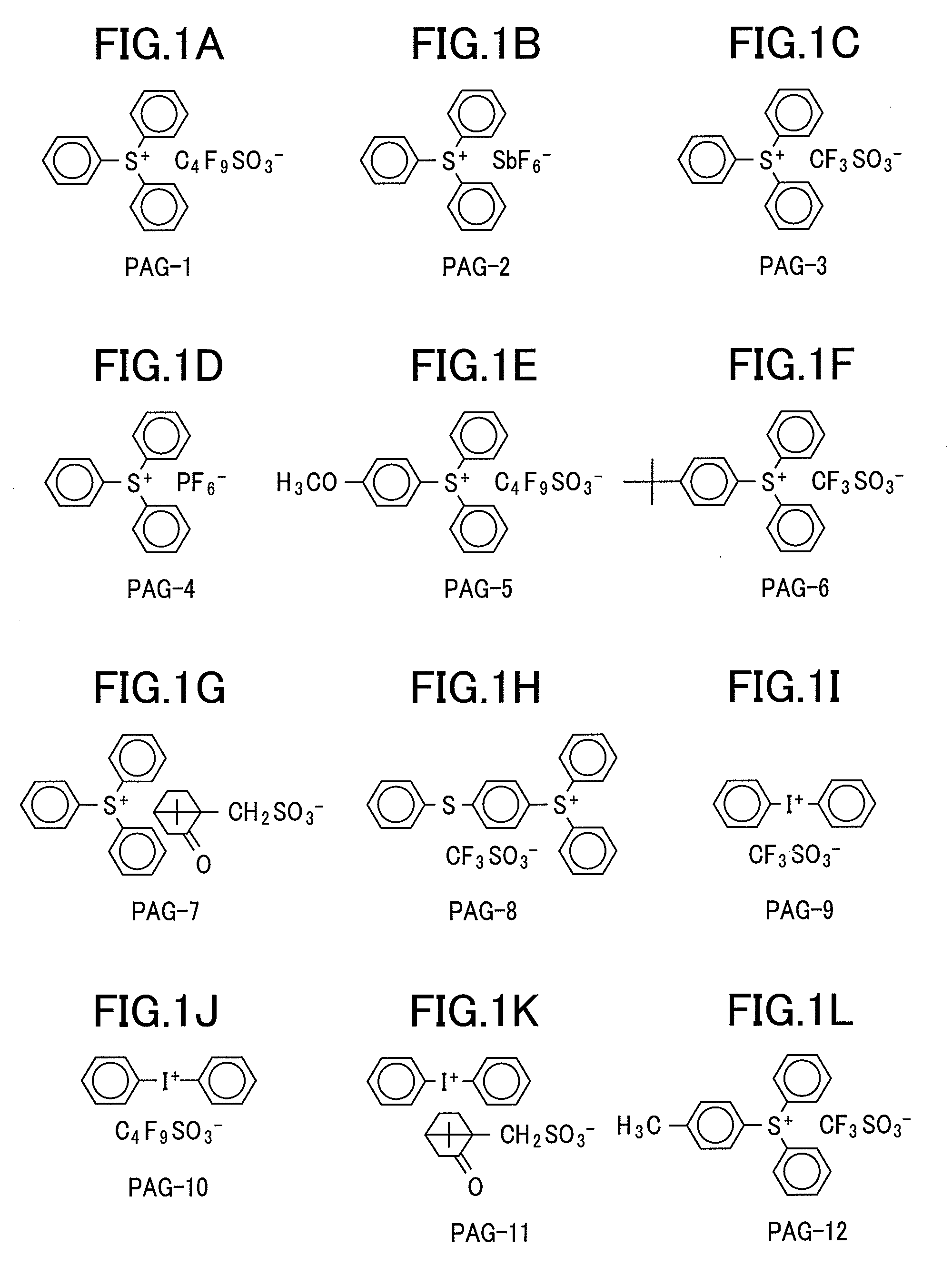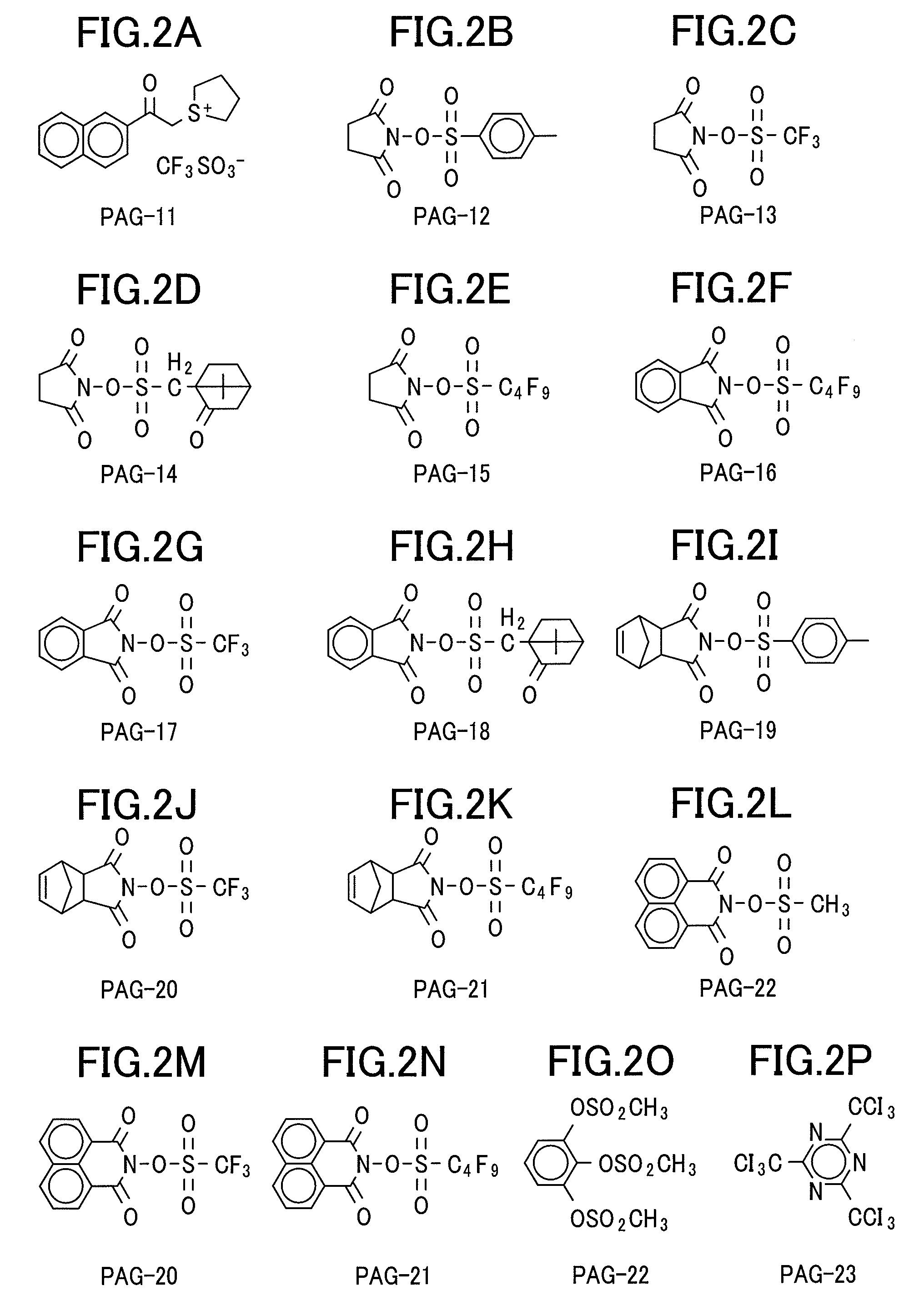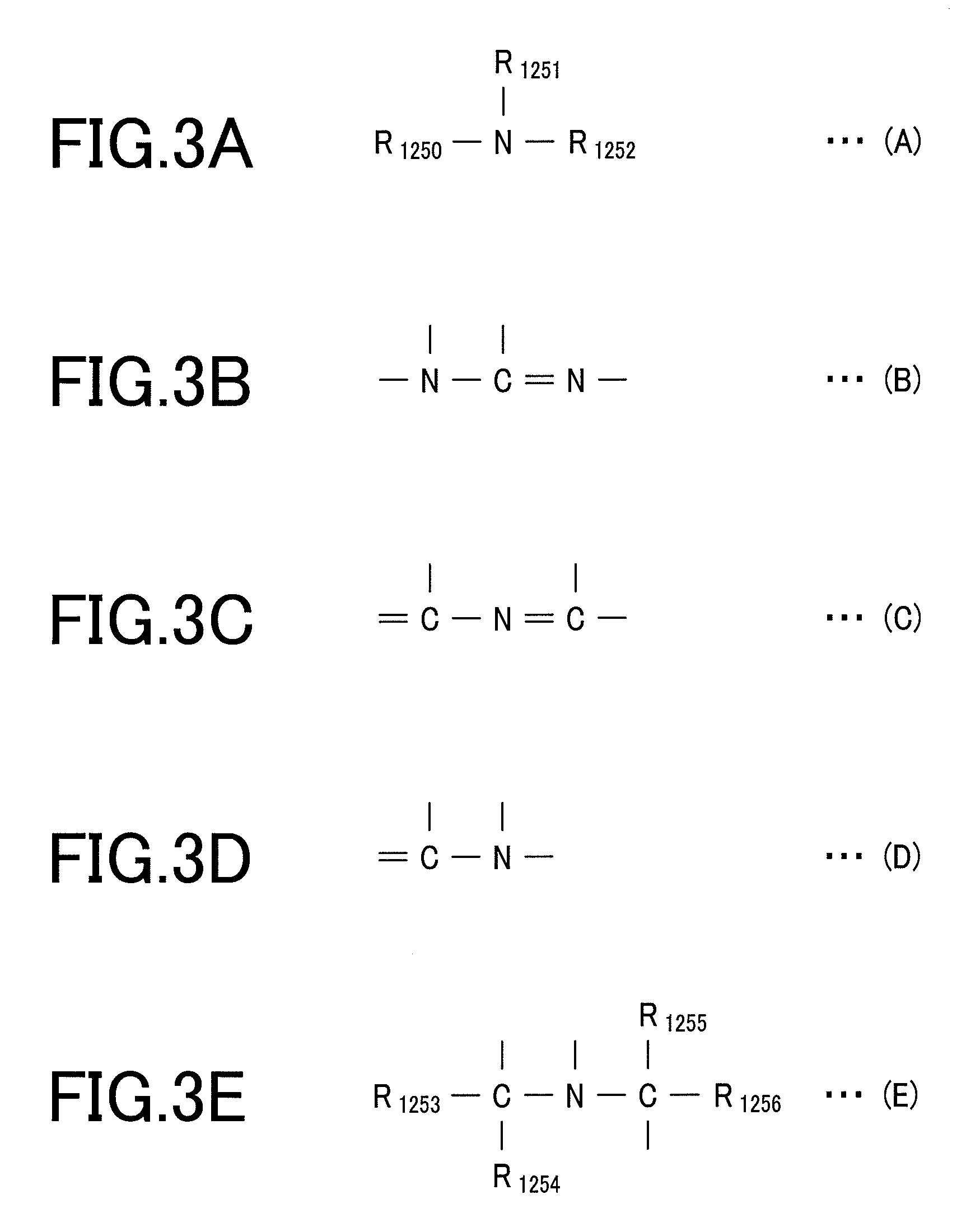Materials for photoresist, photoresist composition and method of forming resist pattern
a technology of resist pattern and composition, applied in the field of materials for photoresist, photoresist composition and method of forming resist pattern, can solve the problems of reducing throughput, difficulty in achieving required processing accuracy, and higher defect occurrence rate due to foreign material disadvantageous, etc., to achieve high sensitivity, low line edge roughness, and high resolution
- Summary
- Abstract
- Description
- Claims
- Application Information
AI Technical Summary
Benefits of technology
Problems solved by technology
Method used
Image
Examples
first embodiment
[0062]In a first embodiment, a method of obtaining materials for photoresist (A1, A2, and A3) by column chromatography according to the present invention is described.
[0063]In a first step (for an etherification), polynuclear phenolic compound 3M6C-MBSA (15 g) and potassium carbonate (7 g) were added to acetone (300 ml), and the mixture was sufficiently stirred. Then a solution prepared by adding a-bromo-γ-butylolactone (4.0 g) in acetone solution (50 ml) was added to the mixture at the room temperature, and the mixed solution was stirred for two hours at the temperature of 45 degrees C. After the reaction is completed, acetone was removed from the solution by evapolation under the reduced pressure, water (250 ml) and ethyl acetate (205 ml) were added to the solution, and the solution was sufficiently shaken in 1L separating funnel. An organic layer was recovered, washed with water (300 ml), concentrated, vacuum-dried, and polynuclear phenolic compound (17 g) was obtained. High-perf...
second embodiment
[0068]In this embodiment, a method for synthesizing a material for photoresist (A4) in which δ-hydroxycarboxylic acid is introduced into 3M6C-MBSA (X1).
[0069]In the first step (for etherification), polynuclear phenolic compound X1 (15 g) and potassium carbonate were added to acetone (300 ml), and stirred sufficiently. a-bromo-γ-valerolactone (4.0 g) in acetone (50 ml) was added at the room temperature, and the solution was stirred for two hours at the temperature of 45 degrees C. After the reaction was completed, acetone was removed by evapolation under the reduced pressure, water (250 ml) and ethyl acetate (250 ml) were added, and shaken sufficiently in a 1L separating funnel. The organic layer was recovered, washed with water (300 ml), concentrated, vacuum-dried, and an ether compound of the polynuclear phenolic compound X1 (17 g) was obtained. HPLC analysis was performed to find that etherification rate was 1.2 per 1 molecule on average, and specifically, a percentage of X1 havin...
third embodiment
[0072]In a third embodiment, a method for a pattern forming using the material for photoresist according to the present invention is described.
[0073]The material for photoresist A1, 100 weight portions, and 5 weight portions for triphenyl sulfonium triflate acid generator synthesized in the first embodiment were dissolved into weight 500 for propylene glycol monomethyl ether acetate (PGMEA), filtered by the filter having the diameter of 0.20 micrometers to obtain a solution of the photoresist compound.
[0074]The photoresist solution was spin-coated to a silicon substrate processed with hexamethyl disilazane, subjected for a thermal processing for two minutes at the temperature of 100° C., and a resist film having the thickness of 0.20 micrometers was formed. A line and space pattern is drawn on the resist film on the substrate with an electron beam lithography system with the acceleration voltage of 50 kV at an irradiation dose of 10 μC / cm2. Then the resist film was subjected to ther...
PUM
| Property | Measurement | Unit |
|---|---|---|
| weight ratio | aaaaa | aaaaa |
| size | aaaaa | aaaaa |
| wavelength | aaaaa | aaaaa |
Abstract
Description
Claims
Application Information
 Login to View More
Login to View More - R&D
- Intellectual Property
- Life Sciences
- Materials
- Tech Scout
- Unparalleled Data Quality
- Higher Quality Content
- 60% Fewer Hallucinations
Browse by: Latest US Patents, China's latest patents, Technical Efficacy Thesaurus, Application Domain, Technology Topic, Popular Technical Reports.
© 2025 PatSnap. All rights reserved.Legal|Privacy policy|Modern Slavery Act Transparency Statement|Sitemap|About US| Contact US: help@patsnap.com



